Achieve Streak-Free Windows with Expert Tips
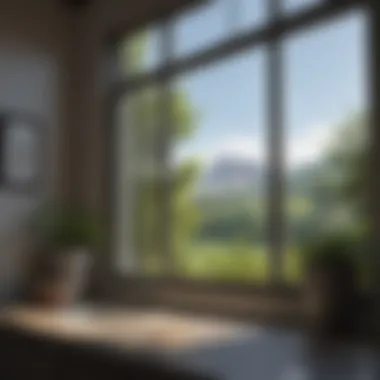
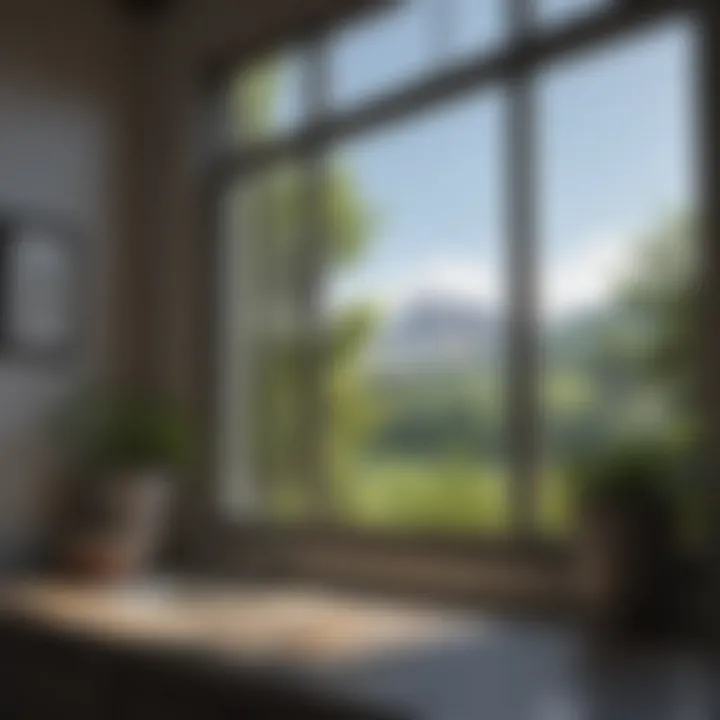
Intro
Streak-free windows are a coveted feature in many homes, bringing clarity and brightness to the space. Homeowners and professionals alike seek methods to achieve this standard. This article offers insights into the techniques and products that ensure spotless glass. We will look into streak formation, evaluate commercial solutions, and explore simple DIY methods with household items. The information presented aims to improve window cleaning habits, leading to an enhanced living environment.
Feature Spotlight
Essential Techniques for Streak-Free Windows
To get started, understanding the causes of streaks is crucial. Common culprits include dirt, dust, and improper cleaning methods. Techniques that focus on the right tools and materials are necessary to combat these issues effectively.
- Microfiber Cloths: These are excellent for cleaning because they trap dirt without scratching the glass. They are reusable and can be washed, making them an eco-friendly choice.
- Squeegees: A good quality squeegee is vital. It helps to remove water and cleaners without leaving streaks. Make sure to use it in a consistent pattern.
- Cleaning Solution: The mixture of water and vinegar is widely considered the best for streak-free results. This simple formula is effective and does not leave residues.
DIY Methods for Window Cleaning
Exploring DIY methods can lead to better results while also being cost-effective. Many household items serve as excellent cleaning agents. Here are some methods:
- Vinegar and Water Solution: Mix equal parts of vinegar and water in a spray bottle. Spray onto the window, then wipe using a microfiber cloth or squeegee.
- Dish Soap and Water: A few drops of dish soap in water create a gentle cleaner. It’s effective for really dirty windows.
- Newspaper: An unconventional but effective method, crumpled newspaper can be used after applying the cleaning solution. It leaves a streak-free finish.
"Using the right combination of tools and techniques transforms the mundane task of window cleaning into an effective practice for achieving clarity."
Evaluating Commercial Products
Several commercial products claim to provide streak-free windows. It’s important to evaluate these based on effectiveness and user reviews. Commonly recommended products include:
- Windex: A popular choice for its ease of use and availability. Many users report satisfying results.
- Glass Plus: Known for cutting through grime, this is another solid option.
- Seventh Generation Glass Cleaner: An eco-friendly alternative that avoids harsh chemicals.
While these products can be effective, it's wise to experiment and find what works best for individual needs.
The End
Achieving streak-free windows is more attainable with the right knowledge and tools. Whether opting for DIY solutions with household items or choosing commercial products, the key is consistency. By following the advice and methods outlined in this article, one can enhance their window cleaning routine effectively.
Understanding Streaks
Achieving streak-free windows is pivotal for both aesthetics and clarity. Understanding the formation of streaks provides a solid foundation before diving into effective cleaning strategies. Streaks can detract from the transparency of glass and may indicate flawed cleaning techniques. They can affect not only the way light enters a premises but also how spaces are perceived—clean versus dirty. Identifying the underlying causes will help create strategies that enhance clarity and ensure a professional appearance.
What Causes Streaks?
The science behind streaks is straightforward yet multifaceted. Primarily, streaks occur due to the improper application of cleaning solutions or residue left on the glass. Here are some key factors that contribute to streak formation:
- Cleaning Products: Some commercial window cleaners contain chemicals that can leave a residue if not wiped off properly. These residues will manifest as streaks when light reflects off the glass.
- Water Quality: Hard water can introduce minerals that leave marks when dried on glass. Similarly, using dirty or contaminated water for cleaning can also lead to unsightly streaks.
- Technique: The method used in cleaning can determine whether streaks appear. Employing a consistent technique and proper tools can minimize streaks significantly.
In summary, understanding these causes is essential for developing a personalized cleaning routine that enhances window clarity.
Common Mistakes in Window Cleaning
Several common mistakes can undermine the efforts of even the most diligent window cleaners. Acknowledging these errors can lead to a more effective cleaning outcome. Here are a few common pitfalls to avoid:
- Using Paper Towels: While convenient, paper towels often leave lint on surfaces. This can be especially problematic if they are used in conjunction with glass cleaning solutions, leading to streaks.
- Clean on a Sunny Day: Cleaning windows in direct sunlight can cause the cleaning solution to dry too quickly, leaving streaks behind. It is often better to work in shade or during cooler parts of the day.
- Neglecting the Corners: Dirt and grime often accumulate in the corners. Skipping these areas can lead to streaks that become evident once the glass is clear.
- Inconsistent Techniques: A lack of a standardized approach when applying the cleaning solution can result in uneven cleaning. This inconsistency may create visible streaks.
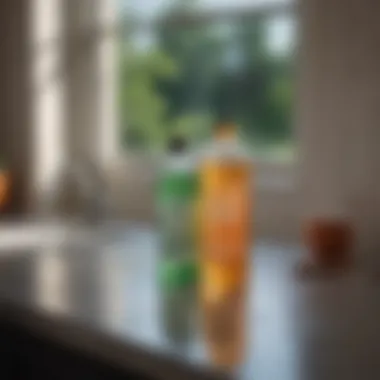
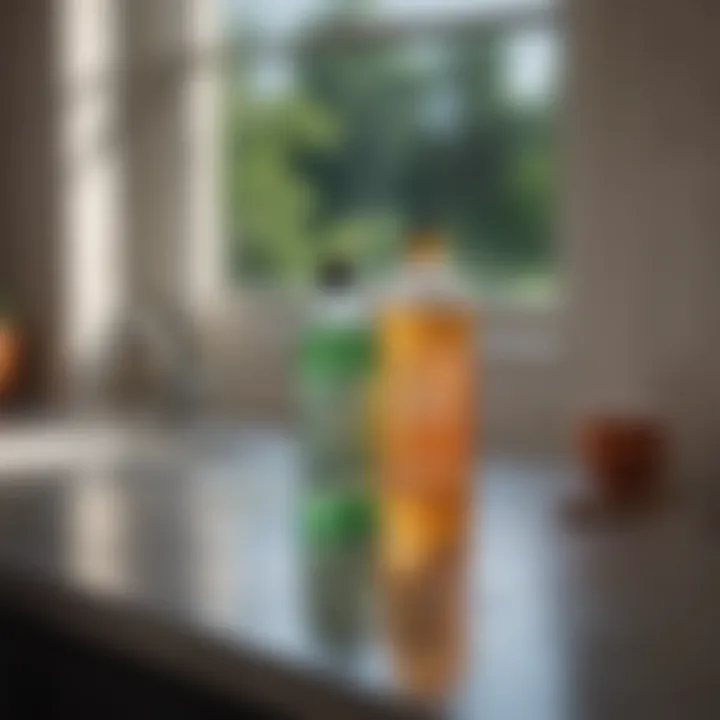
"A successful window cleaning session is not just about the products used, but also the techniques and conditions under which they are applied."
Choosing the Right Tools
Choosing the right tools is critical for achieving streak-free window cleaning. Using appropriate equipment ensures that the job is done effectively while minimizing effort and time.
When selecting tools, consider both the material and design. A thoughtful approach to tool selection not only enhances results but also impacts the overall cleaning experience. Quality tools can significantly reduce the chances of streak formation, allowing for a clearer view through the glass. Furthermore, investing in reliable tools can save costs in the long run, as they tend to be more durable and effective.
Essential Equipment for Window Cleaning
The essential equipment for window cleaning involves a combination of items that work in conjunction to deliver superior results. Common tools include:
- Squeegees: A primary tool for removing water and cleaning solutions from glass surfaces.
- Microfiber Cloths: Designed to trap dirt and grime without leaving lint behind.
- Buckets: For mixing cleaning solutions and providing a reservoir for rinsing tools.
- Extension Poles: Useful for reaching high windows without the need for ladders.
Each of these tools serves a specific purpose and contributes to the effectiveness of the cleaning process.
Microfiber Cloths versus Paper Towels
The choice between microfiber cloths and paper towels often comes down to efficiency and environmental consideration. Microfiber cloths are made of synthetic fibers, which are fine and effective in capturing dirt, dust, and liquids. They are reusable and reduce waste, providing a more sustainable option.
Paper towels, on the other hand, are disposable and may leave lint on glass surfaces, which can contribute to streaks. Using paper towels means more frequent replacement during cleaning. While they can be convenient, the overall cost and environmental impact of disposables should be a consideration for the conscientious cleaner.
Squeegees: A Comprehensive Look
Squeegees are indispensable in any effective window cleaning kit. They come in various sizes and designs, and selecting the right one is essential to achieve a streak-free finish. A good squeegee should have a sturdy handle, a flexible blade, and be easy to maneuver. The blade material matters; rubber blades often provide the best results as they contour easily to the glass surface.
Using a squeegee correctly involves more than just choosing the right tool. The technique is key. Starting at the top and pulling down in a smooth, continuous motion minimizes the chances of leaving streaks. Additionally, wiping the blade with a clean cloth after each pass can help prevent distribution of dirt back onto clean glass.
"> Choosing the right tools is fundamental in ensuring streak-free windows. Use quality equipment to optimize your cleaning effectiveness. The effort spent choosing tools will pay off in cleaner, clearer results.
Commercial Cleaning Solutions
In the quest for streak-free window cleaning, commercial cleaning solutions play a pivotal role. They are designed to tackle different types of dirt and grime that accumulate on windows over time. Unlike DIY methods, commercial products often contain specialized formulations that enhance cleaning efficiency. This section delves into the significance of these products, highlighting their effectiveness, advantages, and key considerations for consumers.
Evaluating Popular Brands
When selecting a commercial cleaning solution, it is essential to evaluate the available brands carefully. Popular brands like Windex, Dawn, and Zep offer various products tailored for glass cleaning. Each brand has its unique qualities:
- Windex: Recognized for its ammonia-based formula that cuts through grease and grime efficiently, Windex remains a favorite among homeowners. However, it may leave behind a slight residue if not wiped properly.
- Dawn: Known primarily as a dish soap, its diluted solution can also aid in window cleaning. Its gentle yet effective properties make it a good option for those seeking less harsh chemicals.
- Zep: This brand provides professional-grade solutions that are often used in commercial settings. Their formulas tend to be more potent and designed for heavy-duty cleaning tasks.
When evaluating these, consider their purpose, ease of use, and the specific dirt type on your windows. Always check for user reviews and tests to ensure that the product delivers what it promises.
Chemical Ingredients to Consider
Understanding the chemical ingredients in commercial cleaning products can influence your selection. Here are some common components:
- Ammonia: Effective in removing residues and streaks because it evaporates quickly. However, its strong smell can be off-putting. Those sensitive to odors should consider alternatives.
- Surfactants: These compounds help in breaking down dirt and make it easier to wipe off. They are often present in household cleaners and vary in strength.
- Alcohol: This ingredient can enhance cleansing ability while preventing streaks due to its rapid evaporation rate. It is often found in glass cleaners.
- Fragrance: Many commercial cleaners include fragrances to mask chemical smells. While these can provide a pleasant scent, individuals with allergic reactions may need to be cautious.
Ultimately, the choice of chemical ingredients will depend on personal preferences, safety considerations, and the specific cleaning task at hand. Reading labels thoroughly ensures you are informed about both the effectiveness and the safety of your selected product.
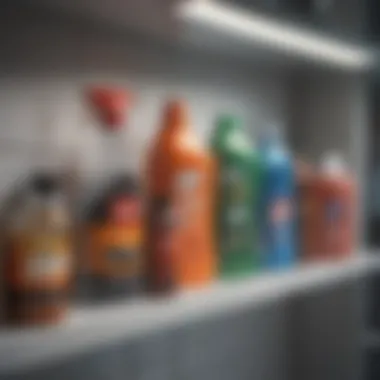
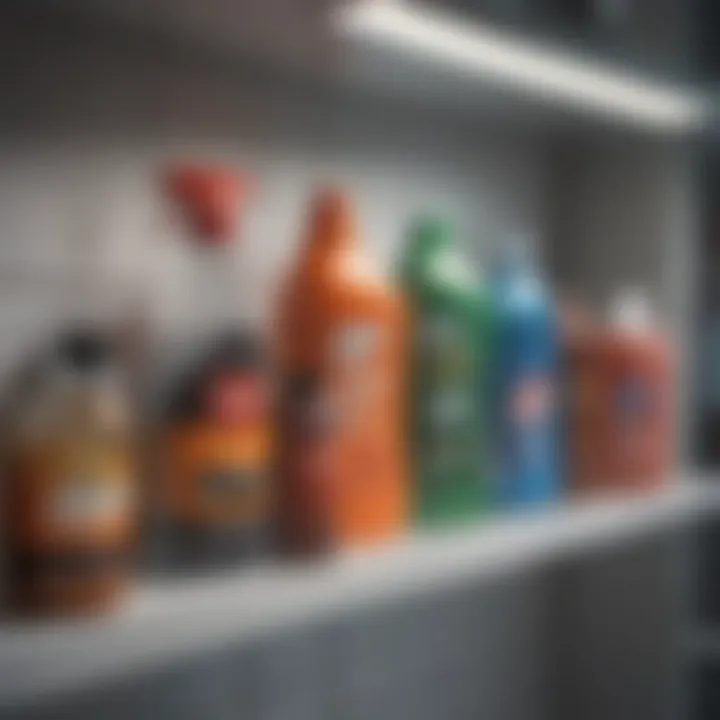
DIY Window Cleaning Solutions
When considering how to maintain streak-free windows, DIY cleaning solutions offer multiple advantages. Homemade mixtures are often more affordable than commercial products, making them accessible for everyone. Furthermore, using household items can minimize exposure to harsh chemicals often found in store-bought cleaners. This means a safer indoor environment, particularly for those with allergies or sensitivities. Beyond safety, DIY solutions are customizable, allowing individuals to adjust recipes based on personal preferences or effectiveness.
Vinegar and Water Mixture
One of the most effective DIY window cleaning solutions is a simple vinegar and water mixture. Vinegar is known for its natural cleaning properties, particularly in breaking down grime and eliminating streaks. To create this solution, mix equal parts of white vinegar and water in a spray bottle. This blend works well because it evaporates quickly, which is key in preventing streaks.
Application is straightforward. Spray the solution directly onto the glass surface and wipe with a microfiber cloth or a squeegee for optimal results. The acetic acid in vinegar effectively cuts through grease and dirt, resulting in a clear finish. Though the smell may be strong at first, it dissipates quickly, leaving behind fresh, clear glass.
Dish Soap Solution
Another viable option for DIY window cleaning is a dish soap solution. Dish soap is formulated to cut through grease, making it a suitable choice for windows that require more than just a simple cleaning. To use this method, mix a few drops of dish soap into a bucket of warm water. Avoid using too much soap to prevent leaving behind any residue that could cause streaks.
Using a sponge or cloth, apply the soapy solution to the window surface, focusing on any areas with built-up grime. Once you have cleaned the window, rinse it with clean water and dry with a squeegee or a lint-free cloth. This technique allows for thorough cleaning while ensuring a streak-free finish.
Baking Soda for Stubborn Stains
For particularly stubborn stains or grime, baking soda can be a powerful ally. Baking soda acts as a gentle abrasive, effective in lifting tough grime without scratching the glass surface. To use baking soda, create a paste by mixing it with a small amount of water. Apply the paste directly to the stained area and let it sit for a few minutes.
After allowing it to work on the stain, gently scrub the area with a soft cloth or sponge. Follow it up with a rinse using warm water to remove any residue. This method is particularly helpful for removing hard water spots or bird droppings that may be difficult to clean using other methods alone.
"Utilizing DIY solutions not only saves money but also ensures a safer and eco-friendlier cleaning process."
Techniques for Streak-Free Results
Achieving streak-free windows is fundamentally linked to the techniques employed during the cleaning process. This section outlines various methods tailored to enhance the effectiveness of your window cleaning routine. Each technique not only affects the visual outcome but also optimizes the longevity of the cleaning, ensuring that your efforts yield the best results while minimizing future maintenance.
The Proper Way to Use a Squeegee
Using a squeegee correctly can make a significant difference in obtaining streak-free windows. Start by ensuring the squeegee blade is clean and free of any debris. It's important to apply the right amount of pressure; too much can cause streaks, while too little may leave water on the glass. Begin at the top of the window and pull the squeegee down in a straight line. To avoid overlapping streaks, wipe the blade with a lint-free cloth after each pull.
- Angle: Keep the squeegee at a slight angle to allow water to flow down.
- Pressure: Moderate pressure is key to removing water without streaking.
- Clean Blade: Regularly clean the blade to avoid transferring dirt and grime.
When to Clean: Timing Matters
The timing of your window cleaning can have a direct impact on the clarity of the glass. It is advisable to clean windows on a cloudy day or during the early morning or late afternoon. Direct sunlight can cause the cleaning solution to dry too quickly, leading to streaks as it hardens on the glass. Observing the weather can prevent frustration and increase the overall quality of your results.
- Ideal Conditions: Overcast skies or cool temperatures.
- Avoid: Hot, bright days when windows heat up quickly.
- Monitor: Seasonal changes can affect how often you need to clean, so schedule accordingly.
The Importance of Cleaning Direction
Choosing a consistent cleaning direction is essential for preventing streaks. It helps in spotting remaining dirt or streaks more easily. For example, start at one corner of the window and work your way across in a horizontal manner, then switch to vertical. This method ensures no spots are missed and allows for a systematic approach to cleaning. Moreover, using the same direction on both sides of the window aids in achieving uniformity in your results.
- Horizontal first, then vertical: This ensures full coverage and simpliifes error checking.
- Consistency: Maintain the same direction on both sides of the glass.
- Spotting Issues: It's easier to identify a streak when cleaning is done in a uniform manner.
"A consistent approach in technique not only enhances the outcome but also defines the overall efficiency of window cleaning."
Using these techniques effectively ensures that window cleaning becomes a straightforward process, yielding excellent results with minimal fuss. Focusing on proper techniques is crucial for both aesthetic appeal and long-term window care.
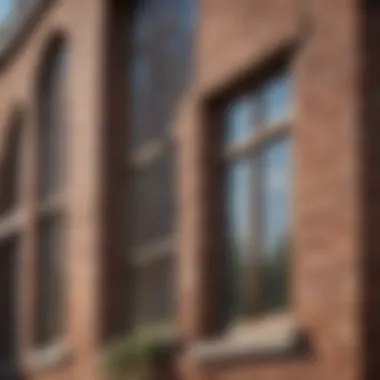
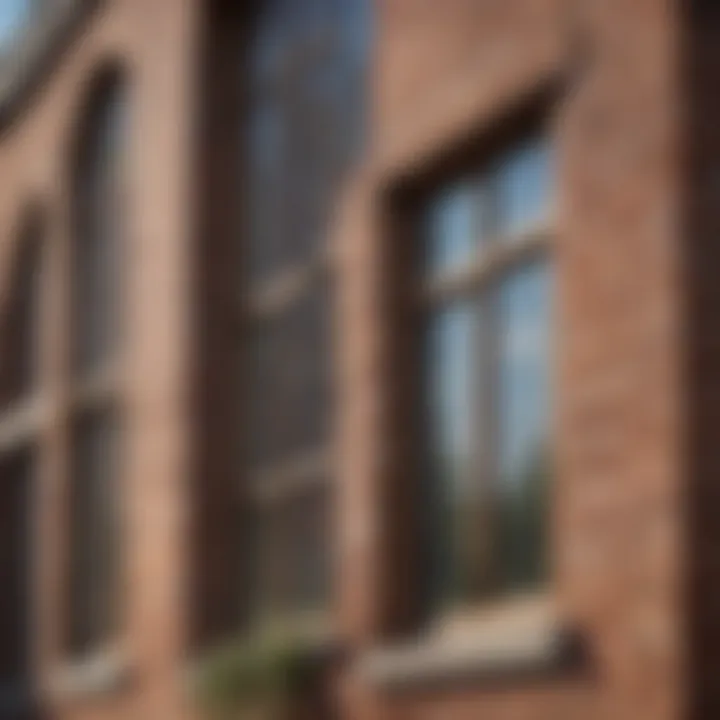
Environmental Considerations
In the pursuit of a streak-free window, it becomes crucial to recognize the environmental implications of cleaning methods and materials. Many cleaning products contain harsh chemicals that can be detrimental not only to indoor air quality but also to the wider ecosystem. This section emphasizes the importance of making conscious choices when selecting cleaning agents and methods that are effective yet environmentally friendly.
Eco-Friendly Cleaning Products
Choosing eco-friendly cleaning products is a key step in achieving clean windows without compromising environmental health. These products are often formulated with natural ingredients that minimize the release of volatile organic compounds (VOCs). Some potential benefits of these cleaning agents include:
- Reduced chemical exposure for both users and occupants of a home.
- Lower impact on local waterways, as they are often biodegradable.
- Safer compositions for pets and children, lessening any health risks.
Several brands such as Seventh Generation and Method offer cleaning solutions that are effective against streaks while utilizing non-toxic ingredients. Furthermore, examining ingredient labels can provide insight into the sustainability of the product. Look for certifications like Green Seal or EPA Safer Choice, which indicate adherence to environmental standards.
Minimizing Water Usage
Water conservation is increasingly important, especially in areas experiencing drought or water shortages. Streak-free window cleaning does not have to come at the expense of wasting water. Here are some strategies to minimize water usage during the cleaning process:
- Use a spray bottle: Mixing your eco-friendly cleaning solution in a spray bottle allows for targeted application, reducing excess water.
- Limit rinsing: In many cases, excessive rinsing is unnecessary. A well-formulated cleaner often does not require additional water once applied.
- Clean during cooler hours: When you clean during cooler parts of the day, evaporation is slower. This can reduce the amount of water needed as solutions remain on the surface longer.
"Water is a precious resource. By implementing smarter cleaning practices, we contribute to its preservation while maintaining a clean and inviting environment."
Incorporating these considerations into your cleaning routine not only promotes a streak-free shine but also supports a broader commitment to sustainability. The journey towards crystal-clear windows can harmoniously align with eco-conscious living.
Preventing Future Streaks
To maintain the clear appearance of your windows, preventing future streaks is crucial. The effort involved in achieving spotless glass should not end once the cleaning process is complete. It is more beneficial to adopt preventative measures to keep windows looking pristine for longer periods. Not only does this approach save time in the long run, it also reduces the frequency of cleaning required, which can preserve the quality of the glass.
Routine Maintenance Practices
Regular maintenance is key to preventing streaks after cleaning. A few simple practices can enhance the longevity of your window's clarity. Here are some recommendations:
- Scheduled Cleaning: Set a regular schedule for window cleaning based on your environment. For instance, homes in dusty areas might require more frequent cleanings compared to those in less polluted environments. Consider cleaning at least twice a year, or more often if necessary.
- Check the Weather: After rainfall, windows might attract dust and dirt due to moisture. Schedule cleaning on clear days. Avoid cleaning during the hottest parts of the day, as sunlight can lead to quick drying and potential streaking.
- Inspect Frames and Screens: Windows pick up dust and dirt in their frames and screens. A quick wipe down can prevent particles from migrating onto the glass after cleaning.
By incorporating these routine practices, you can significantly reduce the accumulation of dirt and grime that leads to streaks.
Choosing the Right Window Frames
The type of window frame can play a significant role in how often streaks appear. Selecting frames that are easy to clean and resistant to dirt can enhance your cleaning efforts. Here are key considerations:
- Material Matters: Vinyl or fiberglass frames tend to gather less dirt compared to wooden ones, which can attract moisture and lead to mold. Opt for materials that offer durability and smooth surfaces for easy cleaning.
- Design Considerations: Windows that are easier to tilt or open allow for more effective cleaning. Consider styles that enable full access to both sides of the glass for cleaning purposes.
- Finish Choices: Frames with a smooth finish can minimize the adherence of dirt. Matte or textured finishes often attract more soil, making maintenance harder.
In closing, focusing on preventative measures and making wise choices about window frames can significantly enhance the quality of your window cleaning efforts. By implementing routine maintenance and selecting the appropriate materials, it is possible to achieve and maintain streak-free windows.
Epilogue
In any discussion centered around maintaining ambiance and clarity within a living or working space, the role of clean windows cannot be overstated. As we have explored throughout this article, achieving streak-free windows is not merely about aesthetic appeal; it is a blend of effective techniques, appropriate tools, and suitable cleaning solutions, whether commercial or DIY.
Understanding the factors that lead to streaks is the first step in avoiding them. By taking into account the common mistakes many make in window cleaning, one can ensure a more efficient approach. Employing the right tools is also essential. Choosing between microfiber cloths and paper towels can significantly affect the end result. Likewise, selecting a high-quality squeegee enhances the overall cleaning process.
Moreover, the information shared about commercial cleaning solutions and their ingredients provides readers with vital knowledge to make informed decisions. For those who prefer more personal methods, the do-it-yourself section highlights simple household alternatives that are both effective and environmentally friendly.
Lastly, the techniques discussed for streak-free results emphasize not just the cleaning method, but also timing and direction of cleaning. This multifaceted approach ensures that one does not just clean windows, but does so in a manner that maximizes visibility and minimizes effort.
In summary, proper window cleaning extends beyond merely using the right solution. It's about integrating various practices for a thorough performance. The ultimate goal is to contribute to a visually appealing environment, whether in homes, offices, or public spaces. By adopting the strategies outlined, readers can look forward to streak-free windows that enhance their surroundings and well-being.
"Clean windows are a reflection of a clean mind."
Thus, as we conclude, we encourage the application of these insights in future cleaning endeavors. Not only will it result in clearer windows, but it will also instill a sense of satisfaction in maintaining a pristine space.







